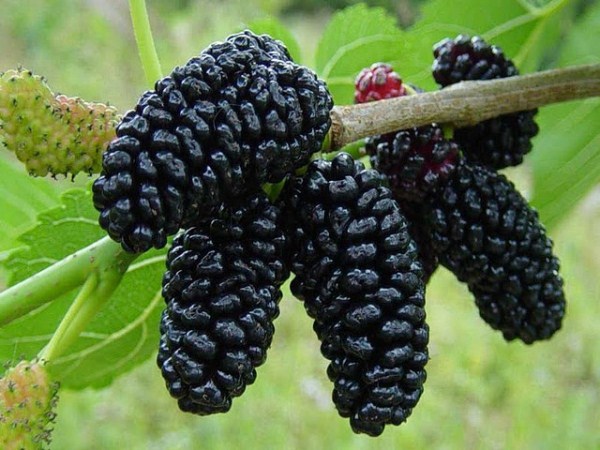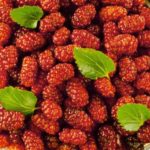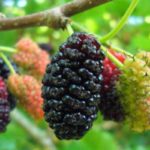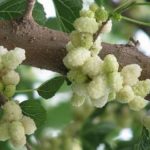Mulberry (mulberry) is one of the unique plants that combines the nutritional and healing properties of fruits. The plant has valuable wood, and the leaves serve as food for the silkworm, which is used to create natural silk.. Deciduous plant, reaching up to 15 m in height, is spread throughout the world. The plant grows in the subtropical zone of Asia, Africa, and North America. And in this article we will talk about the features of growing and caring for mulberry in the suburbs.
Table of contents
Is it possible to grow mulberry at their summer cottage in the Moscow region?
Mulberry attracts gardeners by the presence of a wholesome sweet harvest. The fruit of the plant is the seed of small nuts with accreted pericarp. The berries have white, pinkish and purple hues. With special care, the mulberry tree begins to yield on 3 year after landing. Larger crops are harvested at 4-5 year.
- Red Mulberry
- Black Mulberry
- White mulberry
Mulberry is cultivated in the southern regions of the country - in the Krasnodar and Stavropol Territories, Astrakhan, Rostov, Volgograd and Nizhny Novgorod regions. Moving north, lately, the mulberry is becoming popular in the Moscow region, Siberia, the Urals and other areas of the middle belt..
Since the duration of light days in the suburbs is small, the growing season is carried out only in spring and autumn. However, due to the unique ability to recover quickly, mulberry plant is able to withstand Russian winters with temperatures up to - 30 degrees. However, this applies only to a few species.
How to start planting mulberries?
Having decided to plant and propagate such a strange plant on your plot, first of all, you should pick mulberry varieties that are cultivated in your region.
Mulberry has 17 species. Every year, breeders deduce new varieties of plants, which have more than 200 subspecies. Red, black and white mulberries are the most common species. In the temperate zone grown white mulberry.
Equally important is the choice of the shape of the plant. Given the cold winters, the mulberry is formed by a stunted tree or shrub. Mulberry green plant is often used in landscaping the site in the form of hedges, alleys or singly.
How to choose the seedling, breeding methods
The multiplication of the mulberry tree is done in several ways.: seeds, cuttings, layering, grafting and young shoots.
Seed cultivation method mainly breeders are used to obtain a stock of varietal seedlings. The method is not complicated, but takes a very long time. Seeds are stratified two months before planting. And the landing in open ground is made two years later.
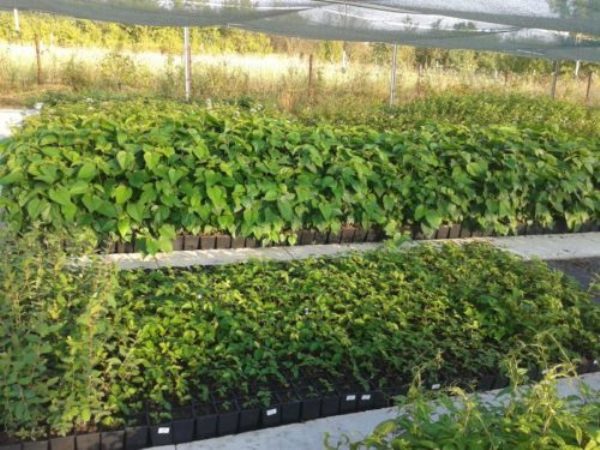
From the cuttings out seedlings with a good root system. However, under normal conditions, this method is difficult to implement. Gardeners often resort to layering.
The easiest method of acquiring a mulberry plant is seedlings. Buying mulberry seedlings, it is worth finding out in what area they grew. For example, brought seeds or saplings from the south in the middle lane will not take root due to the frosty winter. Seedlings grown in your region are more adapted to the local climate.
Mulberry is a dioecious plant that has female and male shoots. To know the floor before fruiting is impossible. Only later 3-5 years after planting, appear on the female shoots fruit. Male shoots do not bear fruit.They are used as a decor and gardening garden. Therefore, it is worth stopping the choice only on three-year-old saplings that have already borne fruit.
Choosing a place for planting mulberry
Mulberry loves sunny, windless places. The best option for placing mulberry is the south side.. Near the fence or wall of the house the plant will be protected from drafts and wind.

The importance of the soil composition of land. Loose loamy soils with deep underground waters are suitable for planting. However, the plant can take root in saline soils. When planting a mulberry tree in empty sandy lands, it is worthwhile to additionally create drainage from a layer of broken brick. To enrich the soil make mineral fertilizers.
Swampy soils, lowlands are disastrous for mulberry. In a damp, over-wetted or compacted earth, the plant withers or dies.
Depending on the shape of the mulberry tree, it is necessary to determine in advance the area of its planting. For a bushy mulberry, the distance between the seedlings should be in 3m, and for the standard form - 5 m.
Rules and technology of planting in the spring and autumn
Planting mulberry seedlings carried out in the spring and autumn periods. In spring, mainly in April, the landing is made before the start of sap flow.. To the plant managed to settle down in the fall, it is planted before the onset of heavy rains and frosts.
Planted seedlings in pre prepared pits with a depth of half a meter 80 * 80 cm. At the bottom is placed a bucket of compost or humus. Lower straightened, loosely lying, roots of seedlings, falling asleep with earth. Poured soil, to improve rooting, mixed with 150 grams of minerals. Watered and tamped. Mulberry sowing is completed by mulching, which saves seedlings from freezing in winter.
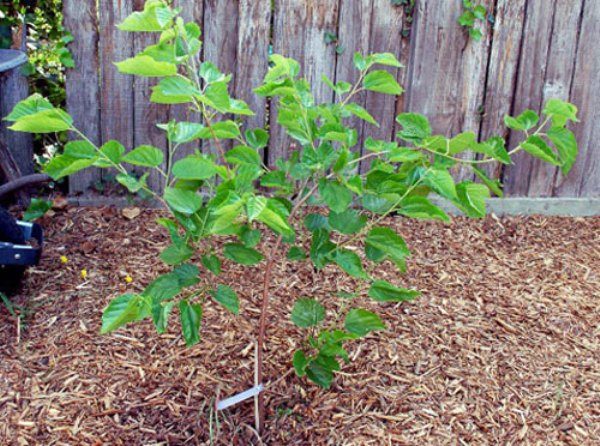
Plant and seed method. At the end of autumn, the seeds are treated with a special solution or are subjected to stratification in the spring two months before planting. Such preparation is necessary for a better seed shoot.Seeds are placed in the ground with a depth of 3-5 cm. Watered and laid mulch from freezing.
Recommendations for planting mulberries:
- Planting a plant root neck is worth a little deeper. Deepening the roots of the mulberry, unlike an apple or pear, does not lead to bark bark;
- Pit for landing prepared in advanceletting them survive;
- Dig pits of such size to the roots could freely fit;
- Do not overdo it with fertilizer. Overgrowth will appear due to oversupply.;
- Thin plant stem tied to a peg or a board previously placed in a pit;
- If the soil is heavy, In the ground add half cars peat.
Observing all the rules of planting, the plant takes root easily and quickly goes into growth.
Care for newly planted seedlings
In the care of mulberry unpretentious. If planting was carried out in the spring, in the first half of the summer, mineral or organic fertilizers are introduced in a small amount and watered abundantly. After July, fertilize seedlings can not. Also in the second half of summer, watering is carried out as needed, without over-wetting the soil.
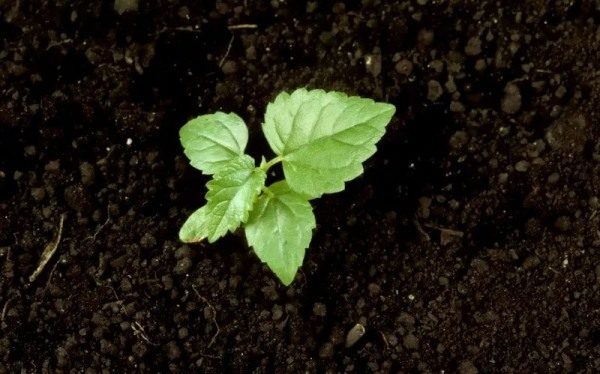
During the summer season, the tree trunk of the seedlings is weeded and loosened the ground. Old dried branches pruned.
To save the mulberry from strong winds and frost, in the fall side shoots are tilted to the ground and covered with spunbond. The edges of the spunbond are pressed with stones or bricks, protecting the plant from rodents. Additionally, mulching from needles, straw or fallen leaves is added to the near-stem circle. During the winter, part of the shoots will freeze. However, the mulberry quickly adapts to the spring and will give new shoots.
Aftercare for seedlings, how to trim and form a crown
Water the plant with the onset of dry weather. Top dressing bring in once a season. Fertilize the soil with manure, wood ash, nitrogenous and potash fertilizers. In the fight against diseases and pests apply insecticides, fungicides and urea 7%. Fertilizers are applied during dormancy - in spring or autumn.
For the winter, mulberry mulch and cover flooring. In the spring, the flooring is removed and pruned branches that are weak and damaged during the winter.
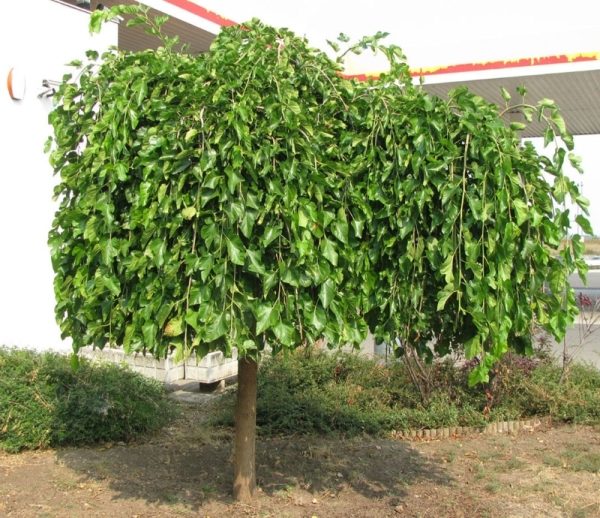
Mulberry develops rapidly the first few years before fruiting. During this period, produce the skeleton of the plant. In April - May, before the onset of sap flow and bud break, they produce formative and rejuvenating pruning. In the weeping mulberry, thin the crown and shorten the branches. For stam mulberry it is necessary to form a crown. Young shoots are removed, leaving one bare trunk with a magnificent spherical or cascade crown. In the suburban and backyard areas form plants low to 1.5 - 2 m, cutting off the top shoots.
Regular mulberry yield is stepping on 4-5 year. Accelerate the appearance of the fruit with the help of vaccinations, after which the plant bears fruit in the third year. Berries ripen in July - August. Ripe fruits often fall off. To improve the collection under the bush spunbond underlay.
Mulberry is increasingly used in summer cottages. Mulberry is resistant to the climate of middle latitudes, it quickly takes root and grows intensively. In case of freezing, the plant quickly adapts and gives new shoots. If during the first two years the saplings took root in a new place, then in the future it will be well tolerated in winter. Taking care, the mulberry can go to the next generation. The plant can be up to 200 years old. And sweet mulberries will benefit the body. After all, mulberry is one of the most useful plants in the world.
